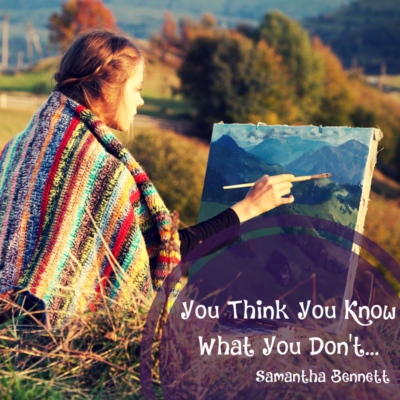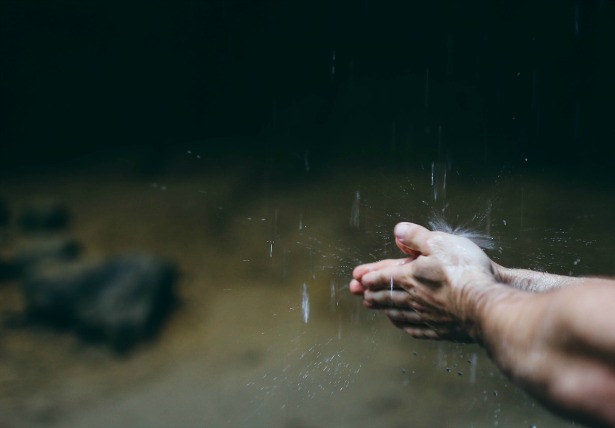
Almost Perfect, Except For Just This One Thing… by samanthabennett222
Create a Customized T Shirt At Zazzle
See more Words To Live By T-Shirts “>Just A Little Divine Dissatisfaction
JUST A LITTLE DIVINE DISSATISFACTION
You’re never satisfied, are you?
Even when something is great, you are always thinking that it could be just a skotch better.
You are always revising.
Your whole life is brief, fleeting moments of satisfaction that only serve to punctuate the endless wash of “if only.”
The grass is not only greener on the other side, it is richer, thinner and better-looking as well.
You just can’t leave well enough alone, can you?
Guess what: nobody can.
Human beings are especially designed to be dissatisfied. We are in a near constant state of dissatisfaction. Dissatisfaction is what we do best. Our brains are constructed to be always ticking along, thinking, “How could this be better?”
And, perhaps more importantly, “How can I be better?”
We are always seeing something that isn’t there and wishing that it was. And artists are more dissatisfied than anyone else.
Artists are better than anyone at seeing a new solution, a new means of expression, a new version of perfection. Artists specialize in seeing what’s not there. Out of nothing, artists create something.
This nothing-into-something business is what people talk about when they talk about miracles, and artists do that sort of miracle more often than most. Of course, mothers and fathers do it, too – that’s why we call it the “miracle” of birth.
Talk about nothing into something: first there was nothing and now there’s a whole new person in the world! And good cooks do it, naturally. And gardeners. And children do it constantly.
So this chronic dissatisfaction you are feeling is not a bad thing. It is Divine Dissatisfaction. It is the restless spirit of creativity calling you to action. You are being called to create. You are being called to reveal the miracle within you.
So, next time you feel like you are an empty well under a clear blue sky, remember: There’s Nothing Wrong With A Little Divine Dissatisfaction.
What are you divinely dissatisfied with today? And what do you think you might do about that?
By the way, you may buy the shirt above by clicking here.

You’re stuck because you think you know what you don’t know.
But you don’t.
Because you’ve never done This before.
You think you know how your project is going to unfold, and I’m here to tell you that you don’t.
You think you know how much people will pay for your product or service, and you don’t.
You think you know how much work your project will be for you, and you don’t.
You think you know how your project will be received, and you don’t.
All these things you think you know (but don’t) are keeping you from moving forward.
Think back to your own experience – every single project you have ever done for the first time has grown and stretched and changed and evolved as you’ve worked on it, right?
So let’s pretend you are an absolute beginner, and enter this project with a spirit of joyful exploration.

From now on, you must keep track of every single compliment you get.
The rule is this: only write down the phrase or adjective– don’t record who said it or why or what you think they meant.
And I do mean EVERY compliment.
Even the ones you don’t think matter, like, “Oh, you look nice today,” or the generic ones like “Good job,” or even the ones that you suspect aren’t really meant as a compliment, like, “You are so funny…”
If you get one of those, then you write down:
Looks Nice
Does A Good Job
Funny
OK?
After several months, review the list and see what there is to see.
Here’s one to start with:
I think you are good and brave.
(Now go write that down.)
—Sam

“…Because you told me I was a stuntwoman and I believed you…” Painting by Lesley Perdomo
Allot Fifteen Minutes a Day to Your Project
If I could actually make you do stuff, the first thing I would get you to do is to spend fifteen minutes each and every day working on your project.
As it happens, you are the agent of change in your life, and I can’t really make you do anything.
But I strongly urge you to make this daily commitment to your project.
Do fifteen minutes every morning
— before you check your email, before you check your email, before you check your email…working on your project.
You will need an iron will to resist the siren call of the Internet, but it’s worth it.
Whatever’s out there can wait while you put yourself first for just a few minutes.
So get out your kitchen timer, or use the timer on your cell phone (in which case you can select an alert sound that you particularly enjoy), and even if you just sit still for fifteen minutes, you will profit.
I’ve heard from my students with attention deficit disorders that using a timer is an especially useful focusing ritual.
You will be amazed by how much work you can get done in fifteen minutes. You will be flat-out astonished by how much progress you make by putting in fifteen minutes a day, seven days a week, for a week, for a month, for three months, for a year.
Intellectually, this makes perfect sense. You know that if you practiced guitar every day for fifteen minutes, before long you’d be a better guitar player.
If you spend fifteen minutes a day writing a novel, eventually you will have written a novel.
If you spend fifteen minutes a day working on your abs, pretty soon you’ll have strengthened your core.
But emotionally this strategy doesn’t feel like it will work. It feels too small and too half-baked.
It may also trigger some feelings of rebellion, anger, despair, or fatigue. Sometimes those feelings show up right when you’re on the verge of a breakthrough.
You might want to think of this as your Daily Fifteen Minutes of Fame.
It ’s your chance to treat yourself like a famous artist for fifteen minutes every day.
After all, would a famous artist have any trouble claiming this small amount of time for herself ? Of course not.
Maybe you’re thinking, “Okay, Sam, but how do I go about this fifteen-minute thing?” Here ’s what I recommend:
Your Daily Fifteen Minutes of Fame — the Why
Quickly — without pondering — close your eyes for a moment and ask yourself, “What does this project represent for me? What value of mine does it represent?” and just let the answer bubble up from inside.
Maybe your answer will be “freedom” or “joy” or “self- expression” or “love” or “escape from the cubicle” or “to prove everybody wrong” — whatever word or phrase brings a little smile to your face is the right one.
You might even make yourself a little sign with your word or phrase on it and post it on or near your timer. (You could even grab a paint pen and decorate your kitchen timer if you were so inclined — a bit of glitter and glue, anyone?)
Your Daily Fifteen Minutes of Fame — the What
Working swiftly, brainstorm a list of fifteen-minute tasks.
Include a wide variety, since some days you might wake up feeling bold and want to tackle something brave such as “entering poetry contest,” and on others you’ll feel quiet and shy and want to do something simple like doodling or daydreaming. With this list at hand, you can quickly select the task that matches your mood.
For example, if I were writing a play called Romeo and Juliet, my list of fifteen-minute tasks might look something like this:
• Write a quickie character sketch of the nurse.
• Research poisons and sleeping draughts.
• Work on the balcony scene.
• Call agent.
• Brainstorm titles (Capulet vs. Montague, Why Fifteen-Year-Old
Girls Should Not Be Allowed to Go Dancing Unchaperoned )
• Write an author’s bio for the back cover.
• Double-check penalties for dueling.
• Write a blog post about doing the wrong thing for the right reasons.
• Research whether a rose by any other name really would
smell as sweet.
Your Daily Fifteen Minutes of Fame — the When
I usually suggest working in the morning, just because getting stuff out of the way first thing seems to work for a lot of people, including myself, but you might find that working after school works well (family homework time?) or just before bedtime.
Some people like to work in the middle of the night. Experiment.
LUNCHTIME PLAYS
My friend Emilie Beck is an award-winning playwright and theater director, and once she wrote a play (two plays, actually) in twenty-minute increments.
She had two small boys at home and a very demanding full-time job, and twenty minutes each day during her lunch hour was truly the only time she had.
It was not her preferred method of working, to be sure, but she made the best of it.
She found not only that she was able to do some great work but also that the action of writing every day helped remind her of her life goals, and kept her in touch with her artist-self, which was, I imagine, in danger of getting temporarily swallowed up by her mommy-self and her executive-self.
LESLEY’S STORY (In her own words)
I will be honest, I didn’t believe you at first. You were so adamant about how only fifteen minutes a day can help you complete a project. “Yeah, right,” kept sounding in my head. It was that same voice that always held me back from starting a project because I never knew where to start.
Whether I was starting a necklace or a painting, I always felt that if I started it, then I would have to finish it right then and there. That is a lot of pressure, so I would sometimes just shrug off some great ideas.
I figured I had nothing to lose by following your advice. I set the timer on my cell phone and started a neck- lace right away. It took me three fifteen-minute sessions to complete one, but by the end of the week, I had three more necklaces than I had anticipated.
I filled in my fifteen minutes with production, and I started to value what fifteen minutes can bring you in a day, a week, and a month! So I decided to transfer this wisdom to my paintings.
Sometimes I would feel inspired to go longer than fifteen minutes. However, if I had only fifteen minutes to give to a project, I was okay with it.
What I am sharing with you today is a painting that I started in February 2011 and finally completed it August 2011. This painting is very meaningful to me and expresses the journey that I have embarked on since starting the fifteen-minutes-a-day process.
The background is a tile collage of different tattoo images that I found in various tattoo magazines (during my fifteen minutes a day I would skim through magazines and cut out my favorite images). Soon I had collected enough to fill up the canvas (again, in different fifteen-minute segments, I glued them to every quadrant of that canvas).
Once the canvas was filled, I started painting the woman. (In those fifteen-minute segments I learned how to get the skin tones I liked, and I played with shadow.)
I will be honest: sometimes during my fifteen-minute segments I would just stare at the canvas and try to figure out what my next move would be. But those fifteen minutes of thought are what helped bring about the spiderweb, the filigree, and the crystals, all of which helped me complete this painting.
I call this painting the Stuntwoman, which is something you once called me. I have found balance in my life, in my career, by just appreciating fifteen minutes every day.
By the way, I gave Lesley the stuntwoman idea because once as she was talking to me about feeling overwhelmed by her schedule, I suggested that she consider the idea of being busy without buying into the story that busy equals being stressed out:
“Think about being busy in the same way that a surgeon is busy during an operation,” I told her. “Be busy like a trapeze artist flying through the air, or like a stuntwoman — just cleanly moving through each task with great clarity, concentration, and grace.”

Maybe you are in the middle of a dry spell so severe your lips are parched.
I’m sorry. I know that feeling — that sinking, empty, aching feeling — and I wouldn’t wish it on anyone.
But I know that eventually it will end. And you will live through it. I’m sorry I can’t say how long “eventually” will be, but I do know that you will get your mojo back.
You are an artist.
And sometimes artists endure extended periods during which it seems as if nothing’s happening.
It ’s called acedia, meaning “spiritual torpor and apathy; ennui” or “anomie in societies or individuals, a condition of instability resulting from a breakdown of standards and values or from a lack of purpose or ideals.”
And it doesn’t mean you’re dead inside.
It just means that you’ve temporarily lost the ability to feel joy in your work. Which is sad.
But if you accept this dry spell as a stage in the artistic process, feeling fully confident that no one and nothing can ever take away your identity as an artist (after all, they haven’t been able to make it go away yet, have they?), you just might survive.
Maybe this is the time to pursue some of those other things you always say you want to do. Volunteer more. Have lunch with friends.
Take a temporary job in a field that ’s of interest to you. Spend more time with children. Read all those books you’ve got piled up. Plan a trip. Sit on the couch with the television off.
Whatever happens, don’t give up on yourself.
Eventually you will get a little tickle. An idea will whisper to you. You’ll catch yourself thinking, “I wonder if . . .” and you’ll be off to the races again, productive, happy, and rejoicing in the renewal of your vibrant, creative voice.






